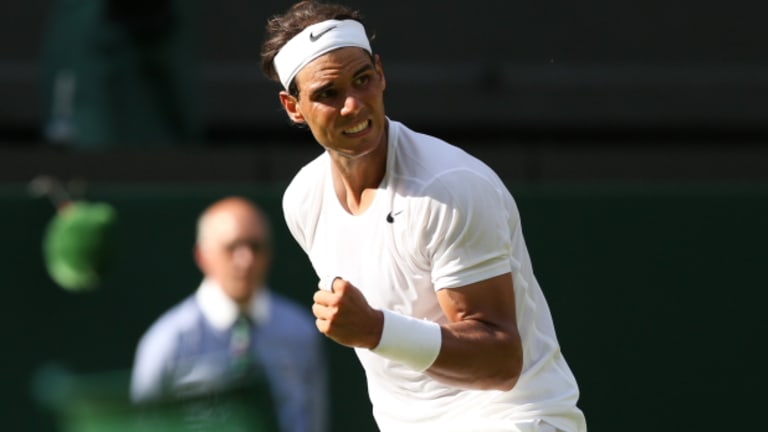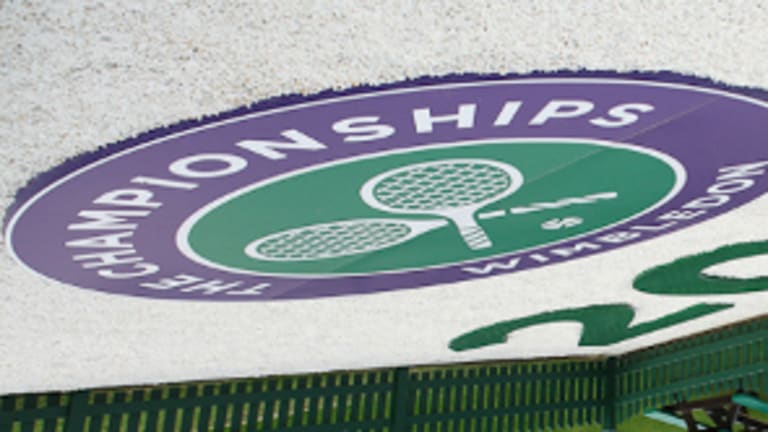WIMBLEDON, ENGLAND—Can a first-round win by the No. 1 player in the world actually be a surprise? I’m not going to go that far, but there was a serious buzz of uncertainty inside Centre Court as Rafael Nadal walked out for his opener on Tuesday against Martin Klizan. That buzz turned ominous a few minutes later, when Klizan, a free-swinging lefty ranked No. 51, thundered his first service return of the match past Nadal and into the tarp for a ringing winner. The full house roared, not with surprise, but with anticipation for the possible upset to come.
Nadal, as most of the audience surely knew, had lost in the first round here in 2013, and the second round in 2012. In fact, he had lost six consecutive sets on grass and had spent only a handful of hours competing on the surface in the last three years. By the end of the first set, it looked like Rafa’s grass future was going to have to wait another 12 months. Down break point at 4-4, he hit a second serve that clanked off the frame and landed in front of the net. The audience gasped as if it had just witnessed a man being hit by a bus.
Was Nadal about to get run over again, as he had by the even-lesser-known Lukas Rosol and Steve Darcis the last two years?
“When you go on court and you lost last year in the first round, the year before in the first round,” Nadal said later, “I don’t lie to nobody, sure it stays in your mind.”
Nadal, as we know, and as he said again today, “fights in every moment.” But when he fell behind this time, he went beyond his competitive norm into what could be called his all-in mode, or his desperation mode, or his forget-the-circumstances-I’m-going-to-win-anyway mode. Or, in this case, his I-still-want-Wimbledon-in-my-life mode. Even after he won a point, there was a look of fear on his face.

